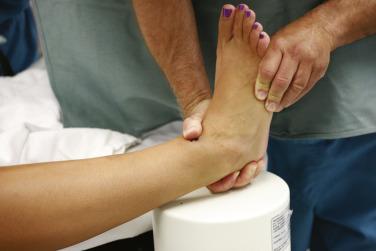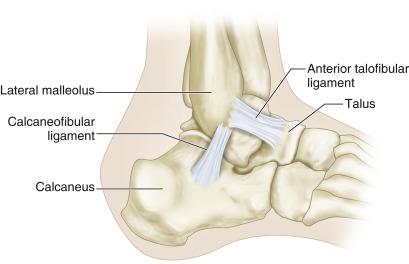Physical Address
304 North Cardinal St.
Dorchester Center, MA 02124
Persistent symptomatic lateral ankle laxity following a lateral ligament procedure
Failure of a physical therapy program that emphasizes peroneal strength, proprioception, and range of motion
Inability to return to sports, even with the use of a brace
Heel varus and forefoot valgus of more than 10° should be corrected at the same surgery.
In a patient with a high cavus foot, consider an electromyogram or nerve conduction study to rule out a hereditary neuropathy such as Charcot-Marie-Tooth disease.
Exclude all other sources of chronic symptoms before assuming that chronic laxity is the problem. Have the patient’s symptoms changed since the index procedure? Does the patient complain of chronic pain, frequent sprains, or both? Persistent, chronic pain is usually not caused by ankle laxity alone. A magnetic resonance image should always be obtained before surgery to assess the ankle and subtalar joints and the peroneal tendons.
The differential diagnosis includes complex regional pain syndrome, traumatic surgical neuroma, superficial peroneal nerve entrapment, peroneal tendinopathy, ankle or subtalar arthritis, ankle impingement, generalized hyperlaxity, and medial ankle laxity. Subtalar laxity should be evaluated.
Semitendinosus or gracilis autograft is a viable option, but requires an additional surgical procedure.
Several surgical reconstructions use all or part of the patient’s peroneus brevis tendon. The brevis is the major dynamic stabilizer of the lateral ankle and should not be used.
In a patient with generalized hyperlaxity, allograft tissue is probably preferable to autograft.
An anatomic reconstruction that follows the normal course of the lateral ligaments will minimize loss of ankle and subtalar motion.
Subtalar laxity may be confused with ankle laxity. Subtalar laxity, however, is an uncommon condition and a controversial diagnosis.
See Procedure 64 on the modified Brostrom procedure.
See Procedure 64 on the modified Brostrom procedure.
Carefully evaluate subtalar motion. A stiff subtalar joint contributes to repeated inversion sprains. It is very difficult to distinguish gross varus laxity of the ankle from normal subtalar motion without a fluoroscopic evaluation ( Fig. 66.1 ).

A gastrocnemius contracture may be present, which predisposes to inversion sprains.
Test for medial ankle laxity (see Procedure 40).
Obtain four weight-bearing radiographic views of the ankle.
Patients with a failed Brostrom procedure should have stress radiographs preoperatively to confirm ankle laxity.
Magnetic resonance imaging should be obtained for all patients.
The anterior talofibular ligament (ATFL) arises from the inferior oblique segment of the anterior border of the lateral malleolus, approximately 1 cm proximal to the tip ( Fig. 66.2 ).

The ATFL inserts on the body, not the neck, of the talus, just anterior to the lateral malleolar articular surface.
The distance to the insertion is 1.5–2 cm directly anterior to the leading edge of the lateral malleolus.
The calcaneofibular ligament (CFL) arises from the lower segment of the anterior border of the lateral malleolus, just below the ATFL. It is 2–3 cm in length.
The CFL inserts on a small tubercle on the lateral calcaneus, 15 mm distal to the subtalar joint. The insertion site is highly variable.
The ligament creates a 90–135° angle with the ATFL. Obliquity of the ligament is dependent on heel position; it is increased with valgus and decreased with varus.
Become a Clinical Tree membership for Full access and enjoy Unlimited articles
If you are a member. Log in here